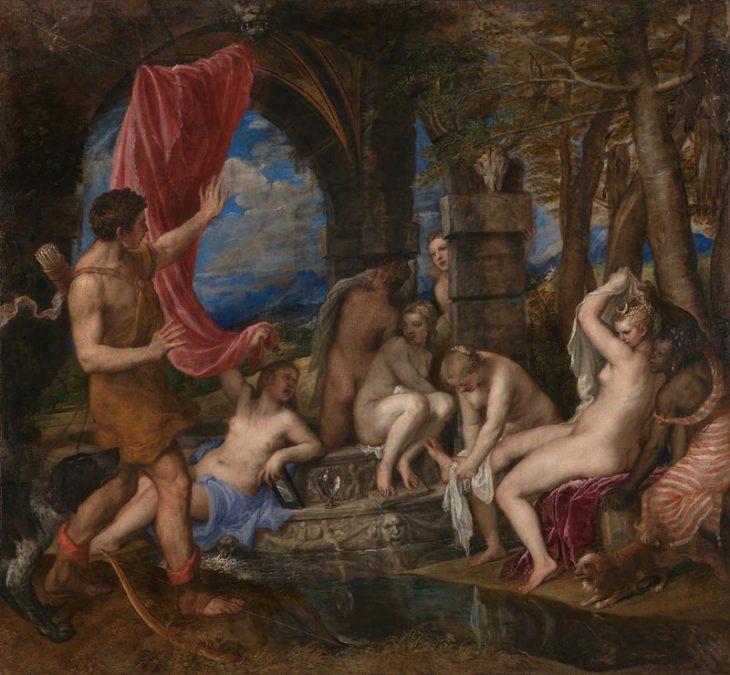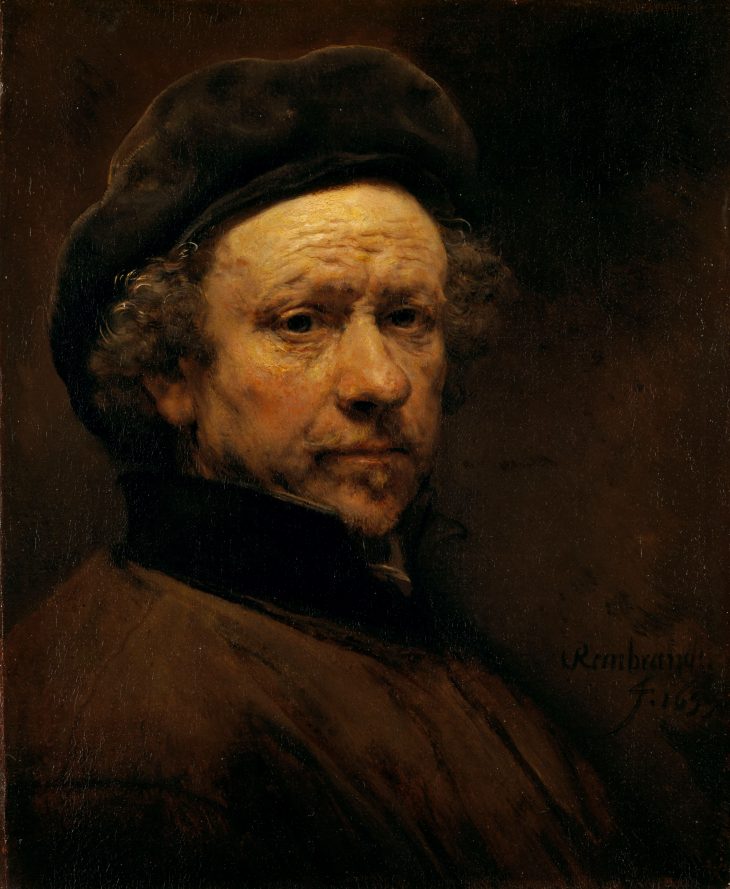Tristram Hunt, the director of the Victoria and Albert Museum, recently named five objects in UK museum collections every child should see. We asked five more leading figures in the museum and art worlds to pick out their own must-see items from public collections in the UK. Here’s what they’ve come up with…
Christopher Baker
Director of European and Scottish Art and Portraiture, National Galleries of Scotland
Diana and Actaeon (1556–59), Titian. National Galleries of Scotland, Edinburgh/National Gallery, London

Diana and Actaeon (1556–59), Titian
National Galleries of Scotland, Edinburgh/National Gallery, London
A clash between the human world and that of the gods in painting of stunning beauty (with the best dogs in all art!)
The Rosetta Stone
British Museum, London
The ultimate code-breaker that revealed the mysteries of ancient Egypt.
The Snail (1953), Henri Matisse
Tate, London
A joyous image of deceptive simplicity and singing colours, which could inspire your own work.
Rain, Steam and Speed – The Great Western Railway (1844), J.M.W. Turner
National Gallery, London
Technology dashes into the future in very British weather: will the hare survive?
Angel of the North (1998), Anthony Gormley
Gateshead
Outdoor sculpture on a monumental scale, delicate and awe-inspiring against changing skies.
Maria Balshaw
Director of Tate
Self-portrait, aged 51 (1659), Rembrandt van Rijn. National Galleries of Scotland

Self Portrait, aged 51 (1657), Rembrandt van Rijn
Scottish National Gallery, Edinburgh
In this self-portrait, Rembrandt’s direct gaze arrests our attention. The effects of time and experience are written on his face, as he explores the subtle colouring and textures of ageing skin with startling objectivity. The artist left more than 80 paintings, etchings and drawings of himself which record his appearance throughout his career and reflect his changing fortunes.
Handsworth Songs (1986), Black Audio Film Collective
Tate, London
A richly-layered documentary representing the hopes and dreams of post-war black British people in the light of the civil disturbances of the 1980s, Handsworth Songs engages with Britain’s colonial past, public and private memories, and the struggles of race and class.
Cold Dark Matter: An Exploded View (1991), Cornelia Parker
Tate, London
This work is made of the restored contents of a garden shed exploded by the British Army at the request of the artist Cornelia Parker. The surviving pieces have been used by Parker to create an installation suspended from the ceiling as if held mid-explosion. Lit by a single lightbulb the fragments cast dramatic shadows on the gallery’s walls.
Hesitate (1964), Bridget Riley
Tate, London
Hesitate is a painting on a rectangular board that features even rows of circular and elliptical shapes. Riley’s paintings of the 1960s are the best-known works of what became called op art, referring to the optical effects that dominate the viewer’s experience of the painting, sometimes having an almost physical effect, destabilising the viewer.
Work (1852–65), Ford Madox Brown
Manchester Art Gallery
Generally considered to be Brown’s most important achievement, Work attempts to portray, both literally and analytically, the totality of the Victorian social system and the transition from a rural to an urban economy.
Alistair Hudson
Director of Whitworth Gallery and Manchester Art Gallery
Brass plaque (16th century), Edo, Benin City. British Museum, London; © Michel Wal, 2009

The Benin Bronzes
British Museum, London
These beautiful artworks are amazingly complex (putting paid to the idea of the ‘primitive’).
Handsworth Songs (1986), Black Audio Film Collective
Tate, London
For the slightly older child, it gives a little bit of a sense of how we got to now.
Work (1852–65), Ford Madox Brown
Manchester Art Gallery
Class, social division, anger, gender and social change, all in one dose.
Alan Turing’s Automatic Computing Engine (ACE)
Science Museum, London
Ushering in the information age, globalisation, hyper-vanity, Fortnite, and some of mankind’s greatest leaps and falls.
John Ruskin’s Lecture Diagrams
Ruskin Library, Lancaster
A comprehensive education from the flawed man whose Victorian equivalent of TED Talks influenced the beginnings of modern environmentalism, the Arts and Crafts movement, the creation of the Labour Party, Gandhi, the National Trust, the conservation of Venice and a general campaign for ecological thinking – the things that children in our day and age will need the most.
Victoria Pomery
Director of Turner Contemporary
Rain, Steam and Speed – The Great Western Rail (1855), Joseph William Mallard Turner. National Gallery, London

Rain, Steam and Speed – The Great Western Railway (1844), J.M.W. Turner
National Gallery, London
Evocative of the industrial revolution in the 19th century, this work provides a historical counterpart to the environmental degradation we are experiencing today.
The British Library (2014), Yinka Shonibare
The technicolour array of books is spectacular. Displaying the names of hundreds of outstanding British cultural figures, this work feels vital – particularly now as we debate the future of our country.
The Unfinished Conversation (2012), John Akomfrah
Tate, London
This work is a tribute to Stuart Hall’s life and writings. In part a reflection on memory, history, race and identity, it is a film that speaks to all of us.
Untitled, Dunce (2015), Phyllida Barlow
Arts Council Collection
I love the way Barlow experiments with everyday materials, colour and form to create monumental structures. For me her work fizzes with the creativity and playfulness we should all adopt in our everyday lives.
Why I never became a Dancer (1995), Tracey Emin
Tate, London
Linked to Emin’s life in Margate and growing up, this is an incredibly inspirational film which suggests that anything is possible – it has a fantastic soundtrack, too.
Ed Vaizey
Minister for Culture, Communications and Creative Industries, 2010–16
Illustration of St Mark, from the Lindisfarne Gospels (710–721). British Library

Lindisfarne Gospels
British Library, London
A medieval masterpiece and the oldest surviving version of the New Testament Gospels written in English.
The Rosetta Stone
British Museum
A linguistic treasure. The key to deciphering Egyptian hieroglyphics and unlocking the door to an ancient world.
The Ambassadors (1533), Hans Holbein the Younger
National Gallery, London
An era-defining example of Tudor portraiture crammed with hidden quirks and curiosities.
Humours of an Election (1755), William Hogarth
Sir John Soane’s Museum, London
A series of snapshots capturing the noise and turbulence at the heart of 18th-century politics – as relevant today as ever.
‘Record Plant’ piano
The Beatles Story, Liverpool
The piano on which John Lennon’s final notes were played before a lifetime defining the course of British pop music was cut tragically short.


